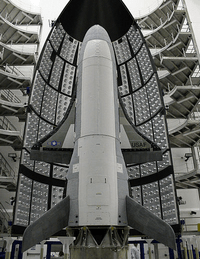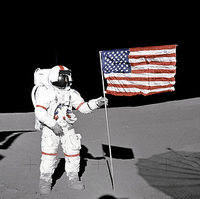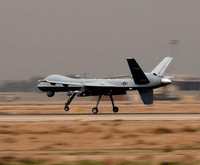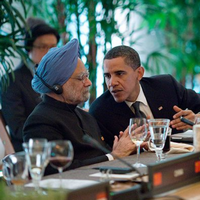A 2008 visa-free travel agreement between Russia and Brazil came into effect earlier this month, spurring tourism and closer ties between the two BRIC countries. In an e-mail interview, Oliver Stuenkel, a fellow with the Global Public Policy Institute, discusses the potential for commercial and political cooperation among BRIC member states. WPR: What is the current state of trade and visa restrictions between BRIC countries? Oliver Stuenkel: Since June 2010, Brazilian and Russian tourists do not need visas to pass or stay on the countries’ territories up to 90 days within each six-month-period from the first entry. This does not […]
India Archive
Free Newsletter
I’ve consciously avoided commenting on the broader subject of Afghanistan strategy over the past six months for three reasons. First, I agreed with the Obama administration’s December 2009 strategy review. Second, even if I didn’t, it seems counterproductive to relitigate the decision at the appearance of every news item that suggests things might not be going as planned. Third, any strategy takes time to assess, and will often defy momentary appearances. So yes, Marjah was a disappointment, the Kandahar “offensive” has anti-climaxed before it even began, and it seems that the insurgency has made inroads into Afghanistan’s northern, non-Pashtun provinces. […]
South Korea’s burgeoning civil nuclear industry is gaining increasing international attention, due to a recent $20 billion construction deal with the UAE (which included an additional $20 billion operation and service contract), and potential multi-billion deals with both Turkey and India. In an e-mail interview, Mark Hibbs, senior associate of the Carnegie Endowment for International Peace’s Nuclear Policy program, discusses South Korea’s rise to prominence in the global civil nuclear energy industry. WPR: What is South Korea’s current status in the global civil nuclear industry? Mark Hibbs: South Korea has steadily built up its nuclear power sector over the last […]

The new space craft’s launch occurred without much fanfare. On April 22, the U.S. Air Force’s X-37B prototype roared into orbit atop a rocket launched from Cape Canaveral in Florida. Some 15 years in development, the X-37’s technology, performance and purpose all are cloaked in mystery. Two months after the unmanned vehicle’s launch, it is still in orbit, performing its unspecified tasks behind the military’s veil of silence and ambiguity. That has caused concern among potential rivals of the U.S. The X-37, which looks like a quarter-scale Space Shuttle, is just 29 feet long from nose to tail and boasts […]

American culture has long had a fascination with outer space. President John F. Kennedy described it as “this new ocean,” and words like “destiny” and “frontier” are frequently used to characterize America’s relationship to it. Hollywood and the media often approach it with a sense of wonder, humility, and even a bit of fear. From the opening strains of “2001: A Space Odyssey” to the aliens from “Avatar,” space remains a source of mystery. This cultural phenomenon may be a remnant of the first two-thirds of the 20th century, when in the span of a single lifetime, it was possible […]

The past year has been a pivotal period for one of the world’s most important strategic industries. In 2009 and early 2010, the military aerospace industry marked key turning points: For the first time, the U.S. Air Force — the world’s most important aerospace customer — bought more unmanned aircraft than manned aircraft. In the same time-span, the Air Force refused to extend production of its exclusive, world-beating F-22 fighter beyond the 187 units it has already ordered, instead opting to develop the smaller, potentially cheaper-per-unit and exportable F-35 Joint Strike Fighter. Following that decision, revelations surfaced in early 2010 […]

Judging by the atmospherics on display during last week’s inaugural U.S.-India Strategic Dialogue, the bilateral relationship between the two countries appears to be on solid footing. U.S. Under Secretary for Public Affairs William Burns called the relationship “one of the defining partnerships of the 21st century,” while U.S. Secretary of State Hillary Clinton spoke of a joint responsibility to “determine the course of the world.” U.S. President Barack Obama even made a surprise visit at the dialogue’s reception, and announced that he would visit New Delhi in November. Yet this flowery rhetoric masks the complex realities of what has been […]
Late last month, Pakistani extremists staged protests along the India-Pakistan border, rallying against what they called India’s unfair use of the shared waters of the Indus River. In an e-mail interview, Harvard School of Public Health Professor and former World Bank Senior Water Advisor John Briscoe, explains the India-Pakistan water dispute. WPR: What is the background of the water dispute in Kashmir? John Briscoe: At partition in 1947, the line between India and Pakistan was drawn on religious grounds, paying no attention to hydrology. As a result, more than 85 percent of the irrigated area of the Punjab — the […]
India and Iran are discussing a new underwater pipeline project that would circumvent a stalled pipeline project involving the two countries and Pakistan. In an e-mail interview, East West Institute Vice President of Programs Dr. W. Pal Singh Sidhu explains Iran-India energy relations. WPR: What is the current energy relationship between Iran and India? Pal Sidhu: India is the world’s fifth-largest consumer of energy resources and heavily dependent on imports. Its energy consumption is estimated to rise to 27.1 quadrillion BTUs by 2025 — the largest expected increase in energy use after China. Even with new domestic oil and gas […]
